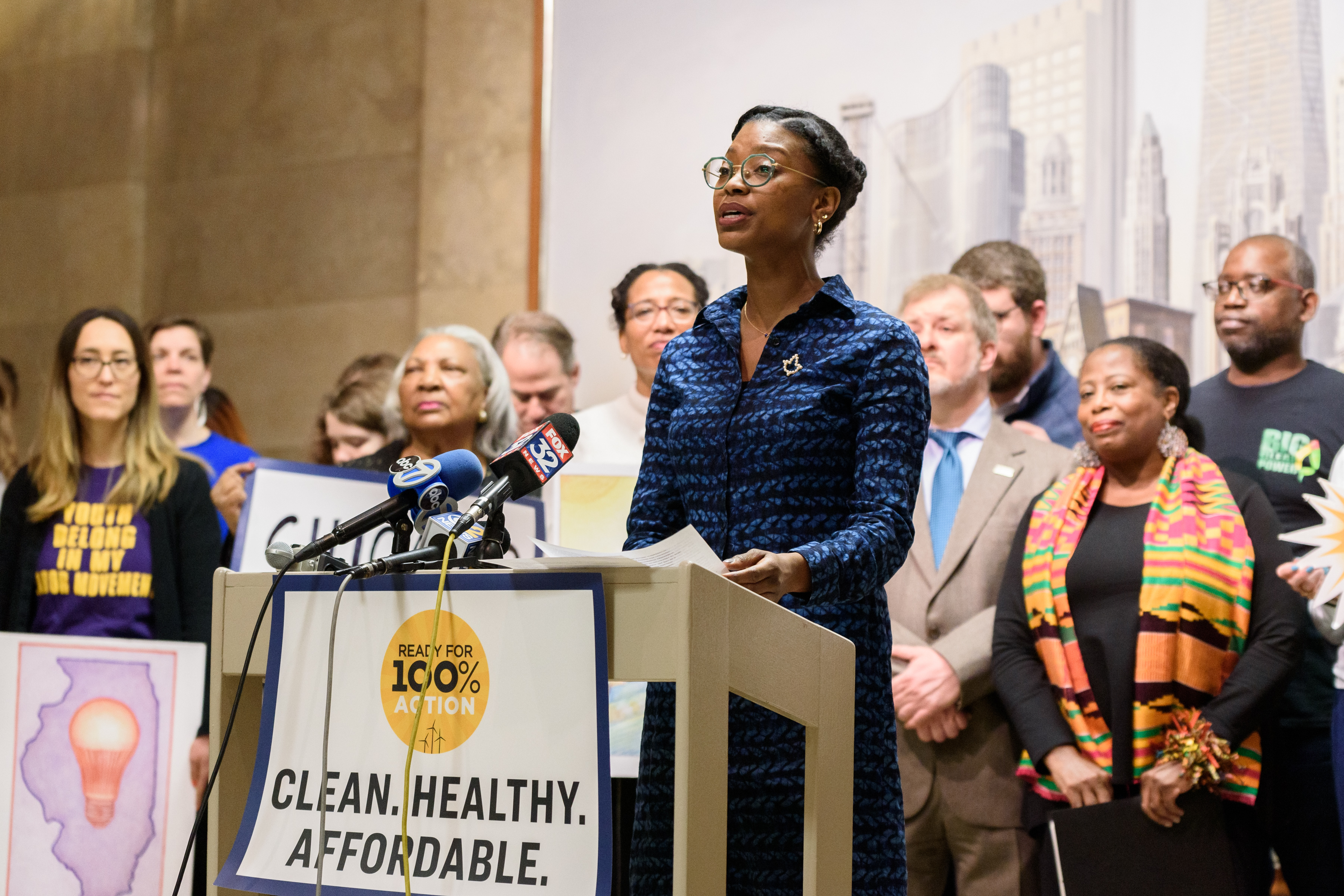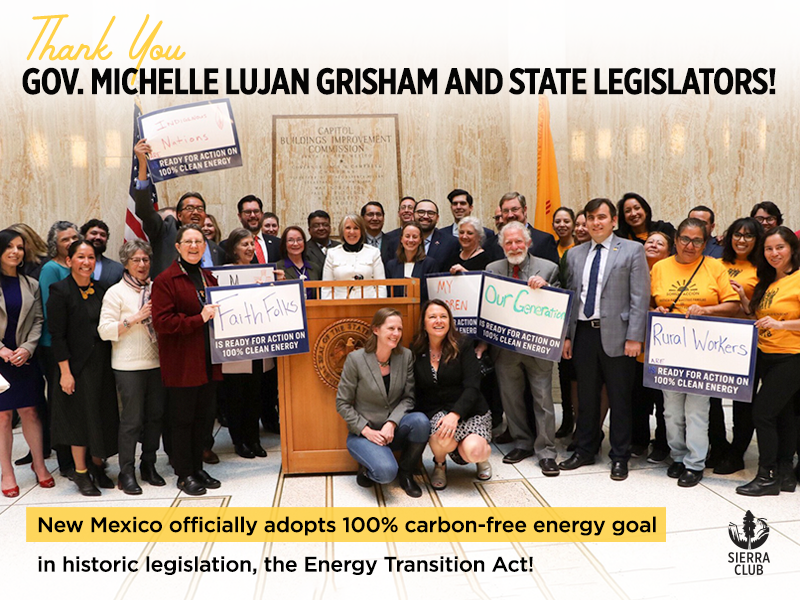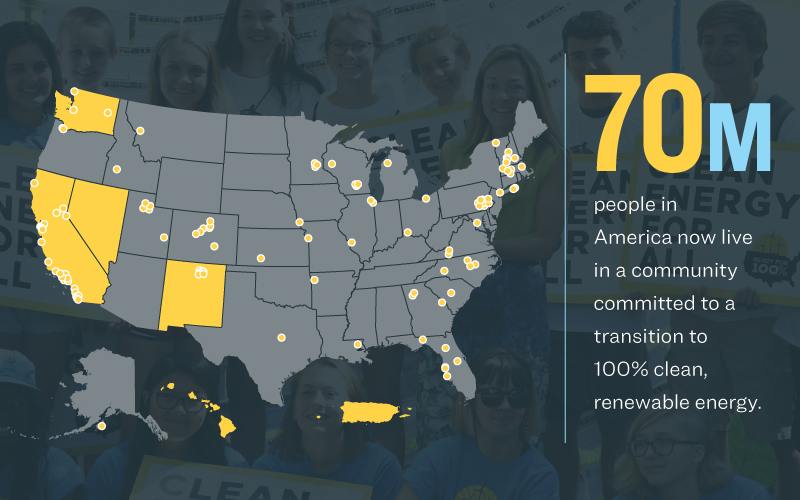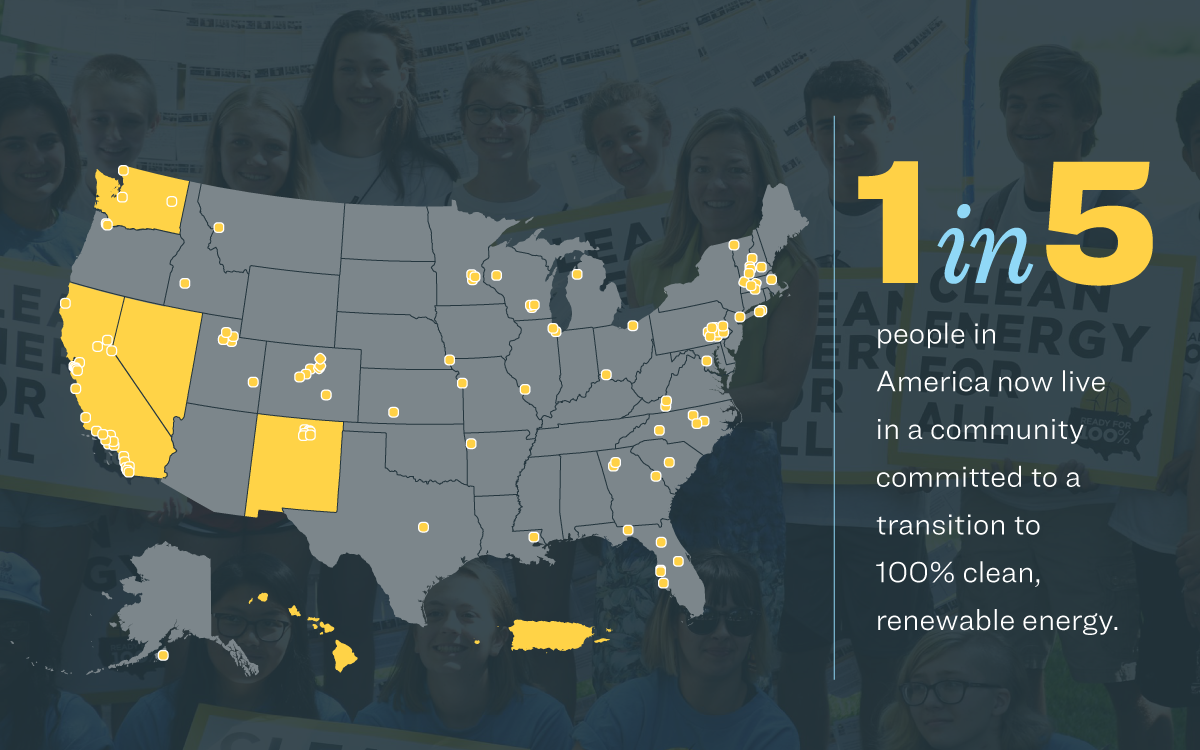“The trend of states targeting 100 percent clean electricity has gone viral.” So begins David Roberts in a piece about some of the strongest clean energy legislation in the country, coming out of Washington State.
In April, Nevada and Washington State joined a growing number of states and local jurisdictions taking action to build an equitable 100 percent clean energy economy, further propelling a national movement of climate and clean energy leadership that has emerged despite the Trump administration’s regressive policies.
As of today, five states -- plus Washington DC, Puerto Rico, and over 120 cities -- are committed to moving to 100 percent clean energy, with several others also considering legislation to get off fossil fuels. And this local action shows no sign of slowing. In April, Los Angeles, Chicago, Boise, and Missoula set their own 100 percent goals, showing how leadership is happening across the country and at multiple levels of government.

Chicago Ready for 100 organizer Kyra Woods spoke at a press conference on April 10 before the Chicago City Council unanimously committed to 100 percent clean energy. Photo by Michael Courier
On Earth Day, Nevada Gov. Steve Sisolak signed SB 358, a bill that requires 50 percent renewable electricity usage across the state by 2030 and sets a 100 percent goal by 2050. The bill was passed unanimously in both houses of the Nevada legislature -- an unprecedented sign of bipartisan support, in a state where a proposed 40 percent renewable portfolio standard failed just last year.
Hours later, the Washington State legislature passed SB 5116 -- legislation that ensures the state will use 100 percent clean electricity by 2045. The bill is the strongest clean energy legislation in the country, with interim goals to phase out coal by 2025 and support energy assistance programs for low-income communities. Gov. Jay Inslee said he looked forward to signing the bill.

Nevada Governor Steve Sisolak signed Senate Bill 358 on Earth Day
With the addition of these two states, 1 in 5 people in the U.S. today live in a place committed to 100 percent clean energy -- 70 million people in total. That’s a total potential emissions reduction of 221 million metric tons of carbon pollution, or the equivalent of taking 47 million cars off the road or retiring 57 coal plants.
There’s no doubt about it: 100 percent clean energy is the new normal.
The trend of states targeting 100 percent clean electricity has gone viral.David Roberts, Vox
Broad, bipartisan public support continues to soar for this goal -- and utilities know it. But the actions cities, states, and power providers are actually taking in response to the demand show the real power of this movement. For example:
-
In New Mexico, after the state passed the Energy Transition Act earlier this year establishing a 100 percent clean energy target by 2045, the Public Service Company of New Mexico announced it would transition its own power generation to 100 percent clean by 2040 -- five years sooner than the state’s deadline.
-
In Utah, communities aiming for 100 percent clean energy are banding together to reach their goals with Rocky Mountain Power (a subsidiary of PacifiCorp). Salt Lake City adopted a commitment to 100 percent renewable electricity in 2016 -- since then, other communities have joined Salt Lake in passing commitments, including Park City, Summit County, Moab, and Cottonwood Heights. On Earth Day, these municipalities celebrated the passage of HB 411, which will enable any community that establishes a 100 percent commitment to enter into a collaborative process with RMP to put forth an application to the Utah Public Service Commission to achieve 100 percent net renewable energy by 2030.
-
In Colorado, 10 communities have committed to 100 percent clean energy -- and they’re prompting two of the state’s major utilities to increase renewable energy use. In December 2018, Xcel Energy and Platte River Power Authority responded to Coloradoans’ demand for 100 percent renewables by making 100 percent announcements of their own. At the state level, the legislature and Gov. Jared Polis -- who campaigned on 100 percent clean energy for all Coloradoans -- are already getting to work slashing the state’s emissions through myriad climate initiatives.
-
In Georgia, the City of Atlanta has created a first-of-its-kind plan detailing how the city would reach its 100 percent goal by its 2035 target, setting a model for other Georgia communities. Atlanta is the largest city in the South aiming for 100 percent clean energy -- and one of its primary motivators for reaching its goal is to provide relief to residents, with some of the highest energy burdens in the country.
-
In Missouri, Ameren, a major investor-owned utility, is responding to community demand for renewables with new energy programs. The City of St. Louis aldermen unanimously committed to 100 percent clean, renewable energy in 2017, and in explicit response, Ameren created a new program for large energy users interested in investing in 100 percent renewable energy, called the Green Tariff. In 2018, the PUC established a rule that requires utilities to incorporate city renewable energy commitments into their long-term planning.

Image by Sierra Club
Progress is important -- but so is ensuring our energy transition is done right. We won’t reach 100 percent if we’re not also achieving economic, environmental, and racial justice across the country. We must ensure that clean energy fosters healthy and resilient communities, a safer climate, and a stronger democracy where every family, worker, and student benefits from the system we’re building. We all stand to gain when clean and renewable energy powers us forward. It’s happening already -- and there’s no going back.
The U.S. is in the thick of the clean energy revolution -- and the progress is being made at the subnational level. Town by town, city by city, and state by state, the Sierra Club is working with local officials, labor representatives, faith leaders, community groups, and residents to ensure communities have access to affordable, healthy, equitable renewable energy.

Image by Sierra Club
